Mal-Aria
The Objective:
This semester consisted of two requirements. The first requirement is to design a Cosmogram, a visual representation of all the data collected and researched. With this data, the second requirement is to design a device that will somehow impact the atmosphere. The device will then be implemented in the building.
The Mosquito and Malaria
Mosquitoes are the biggest killer in the world. One of the reasons why they are the deadliest is because of Malaria. Over half the world’s population is at risk of catching malaria with 91% of cases occurring in Sub-Saharan Africa. The climate creates one of the best environments for the mosquito to thrive due to the temperature and rainy season.
There are 3500 species of mosquito, yet only 5 species can carry the deadly malaria parasite Plasmodium Falciparum. Through our research we explored the different aspects of the mosquito like their lifecycle and behaviours. Then we began researching malaria and the impacts on the health, economics and social aspects to name but a few. The final aspect of the initial research was looking into Sub Saharan Africa, understanding the climate and key issue faced there.
The Cosmogram
The design for the cosmogram came for a simple diagram. This diagram was a way for mapping all the connections between the different parameters defined from our research.
-
- Red=Health
- Green= Ecological/Environmental
- Blue=Geographical
- Orange= Political
- Yellow= Social
- Purple= Economical
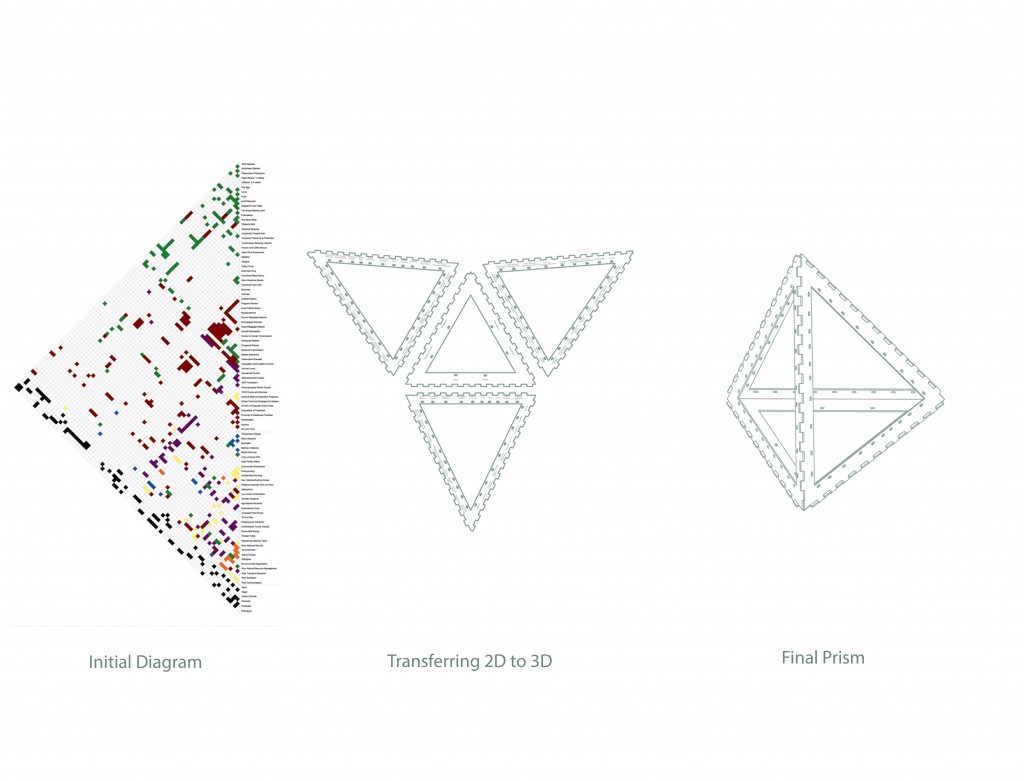
From the diagram we then translated it to 3D, creating a prism form. Each face of the prism represented one of the main categories, Mosquito, Malaria, Sub Saharan Africa and Particles.
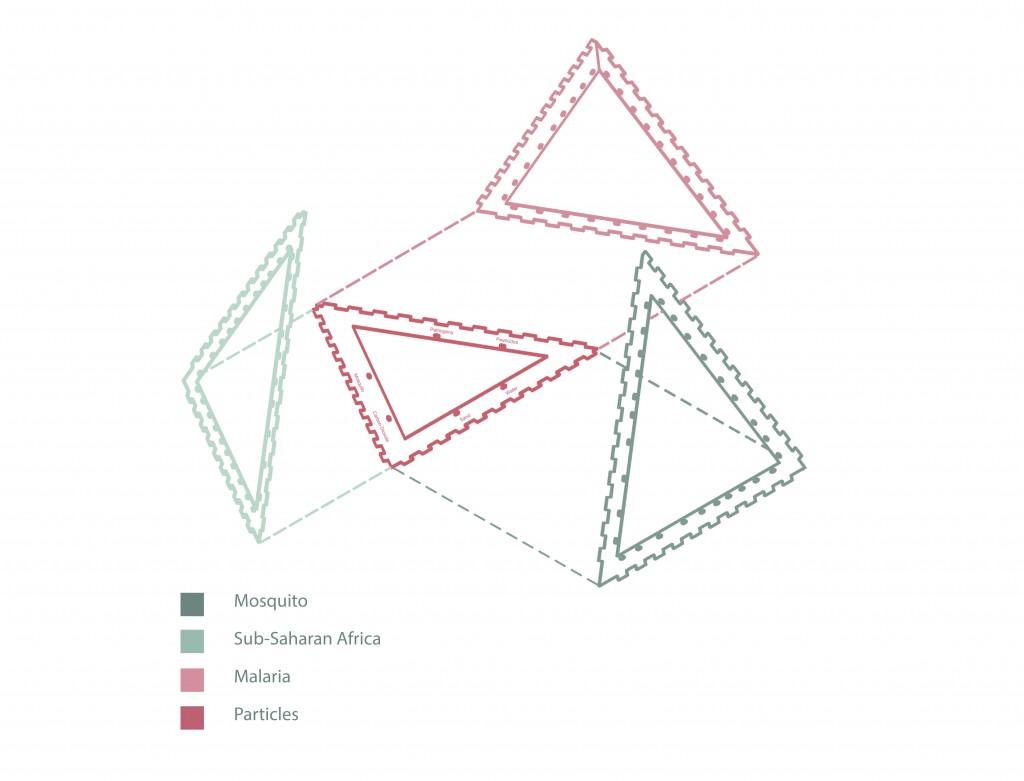
To fully understand what the future could look like for the mosquitoes we created four scenarios based on highly probable situations. The first is the current situation. The next is a possible economic boom, followed by the success of the transmission blocking vaccine, and finally drought. Below are the diagrams showing these.


To tell the story, the prisms start all linked and as the stories of the scenarios are narrated the cosmogram unfolds.
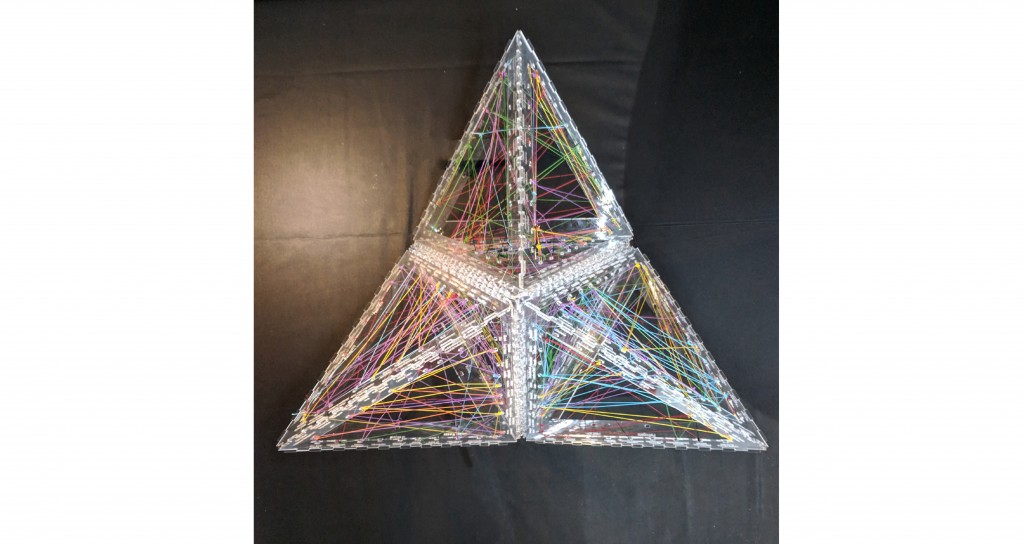

Conclusions of the Cosmogram
-
- One of the industries affected the most- agricultural industry employs 60% of those employed
- Economic burden on families is significant
- Mosquitoes are a complex insect that are learning and evolving
- Most of the methods for controlling mosquitoes are for inside
The Device
From the cosmogram we set goals for the device:
-
-
- Take away the economic burden on the consumer
- To be located in the skies
- Multiple benefits not only affecting the mosquito
- Avoiding to create a killing machine for mosquitoes.
-
- Create a device that will control mosquitoes through orchestrating the ecosystem.
We began by researching how we could orchestrate the ecosystem by looking into predators, narrowing it down to the bat.
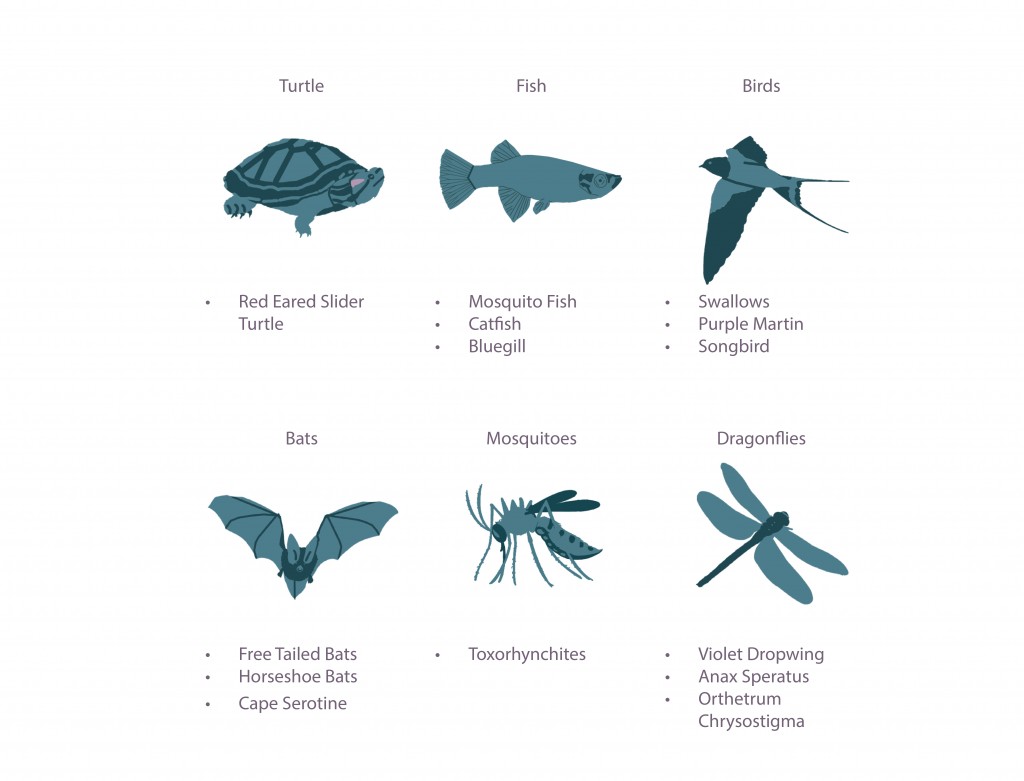
The device combines, wind, light, bats, mosquitoes and insects. Wind will be used to generate energy to power the LED lights which will attract insects including mosquitoes. The insects and mosquitoes will bring bats and thus they will control the pests. Green light was chosen as mosquitoes are primarily attracted to blue and green light, while bats are able to sense green and red light meaning they will not crash into the device.
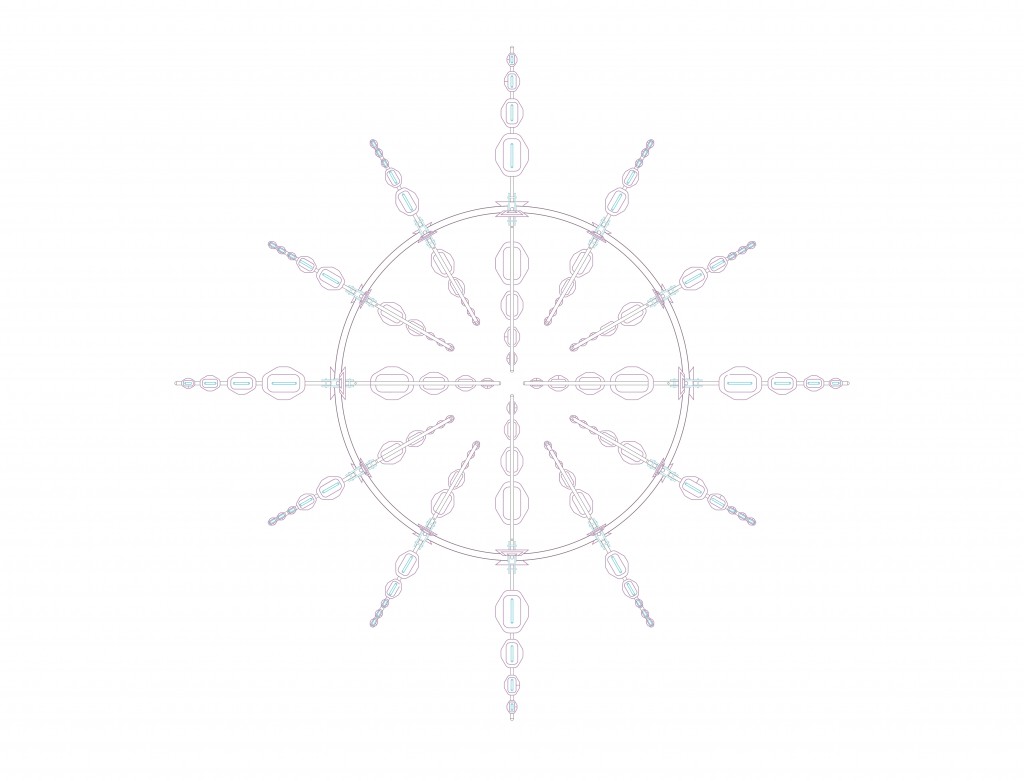
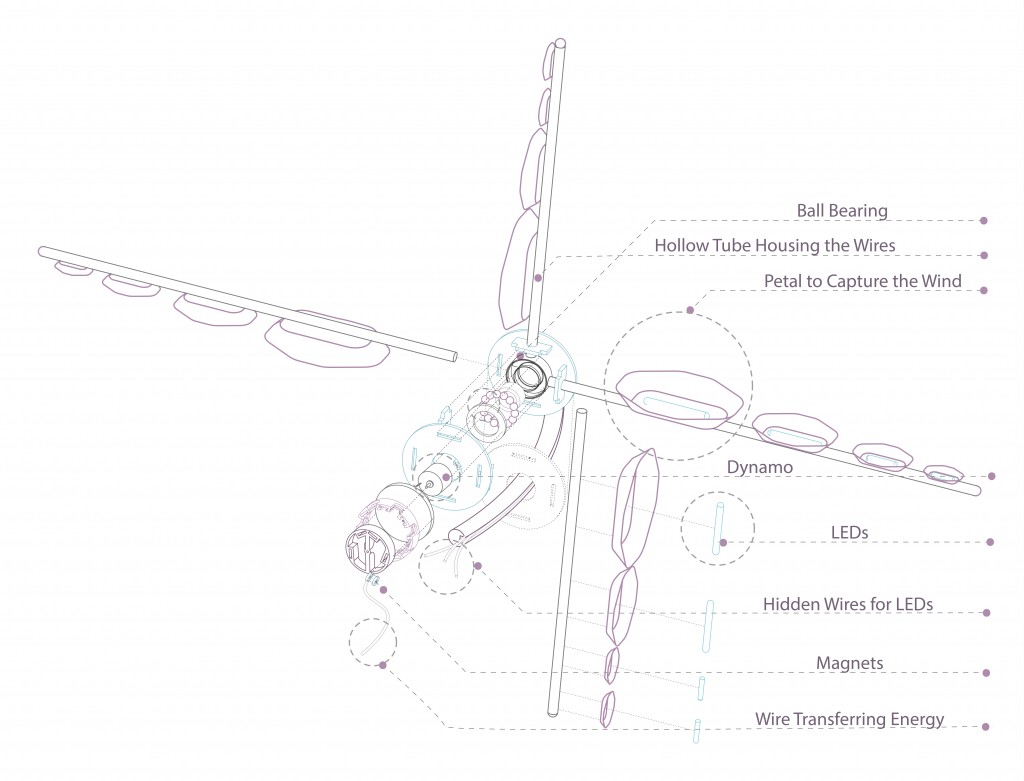
The device will be suspended with Helium Balloons.
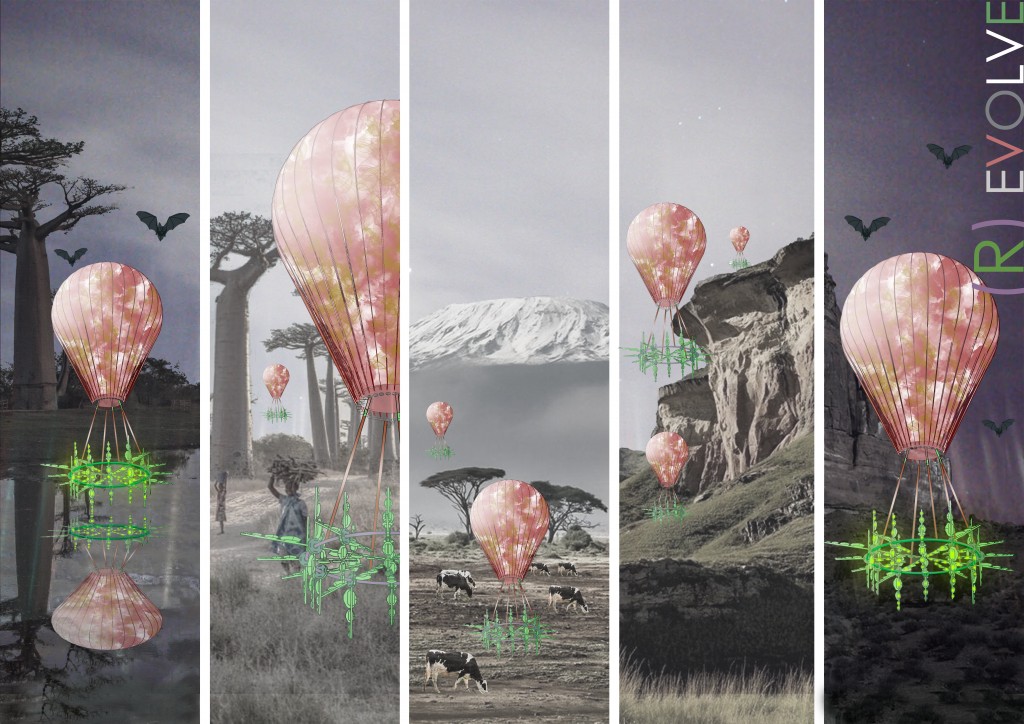
Below are the results of our device in action.
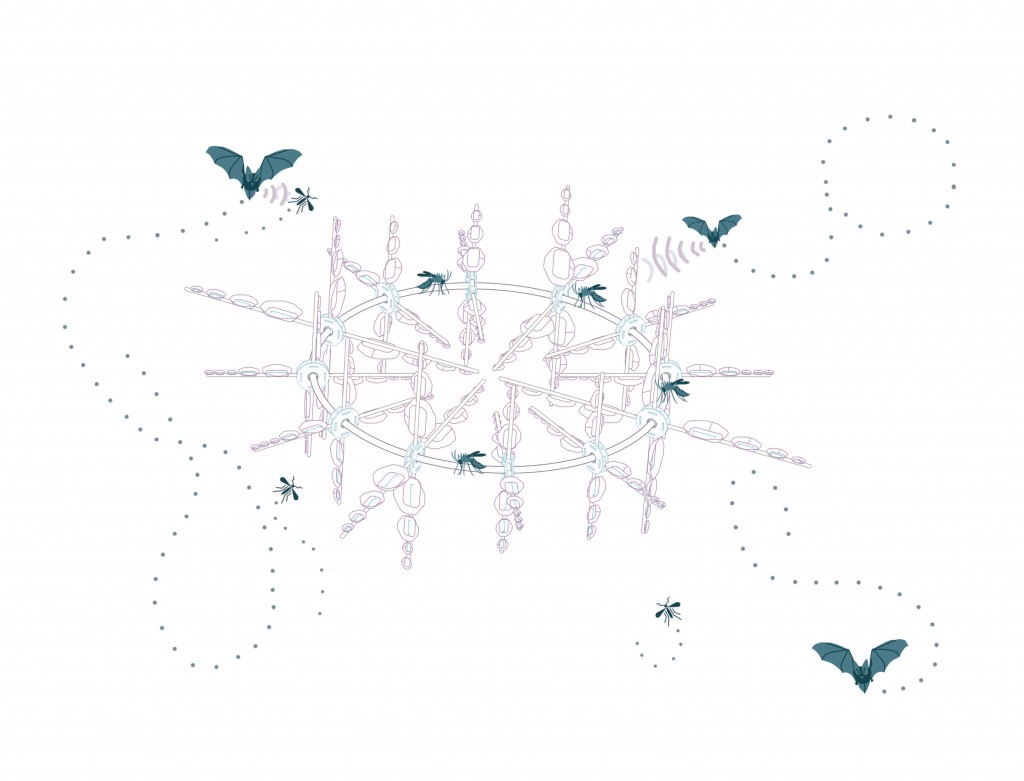
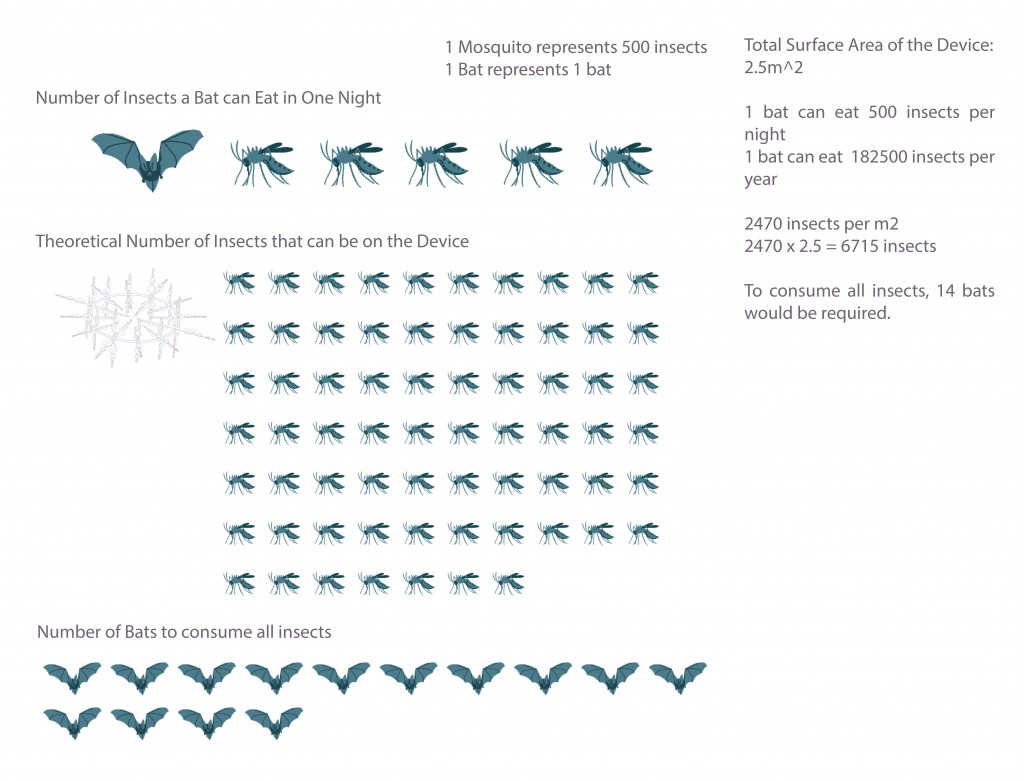
Construction Process

Implications of installing the device
By implementing the device across agricultural farmland, not only will this impact the farmers, but it will also increase output. If output increases so will the countries GDP.
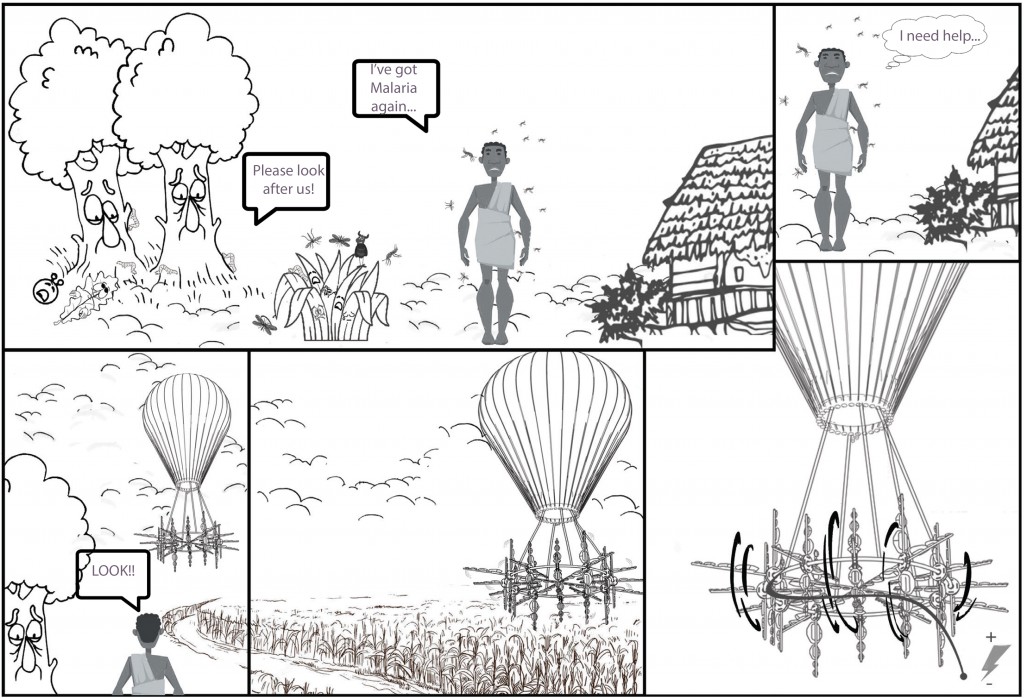
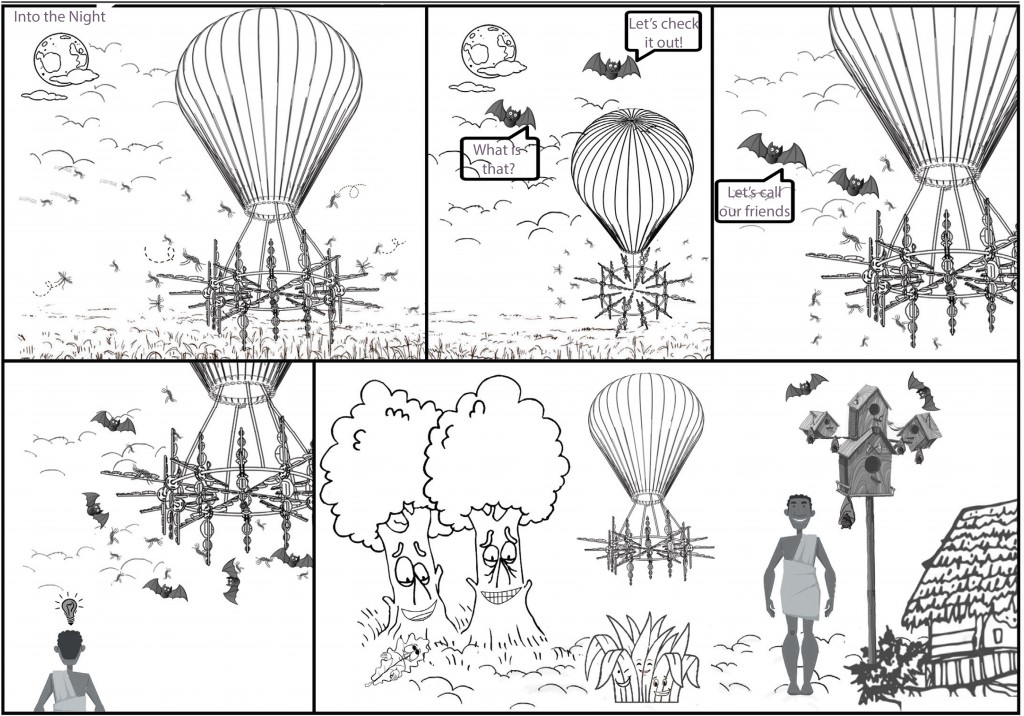
Mal-Aria is a project of IaaC, Institute for Advanced Architecture of Catalonia developed at Master in Advanced Architecture, in 2018/2019 by:
Students: Ashwin Varma Dandu, Fiona Demeur, Abhay Devidas, Haresh Ragunathan
Faculty: Enric Ruiz Geli, Josep Perello, Mieria Luzarraga,and Alejandro Muino
Support: Mohamad Rachid Jalloul and Francois Nour